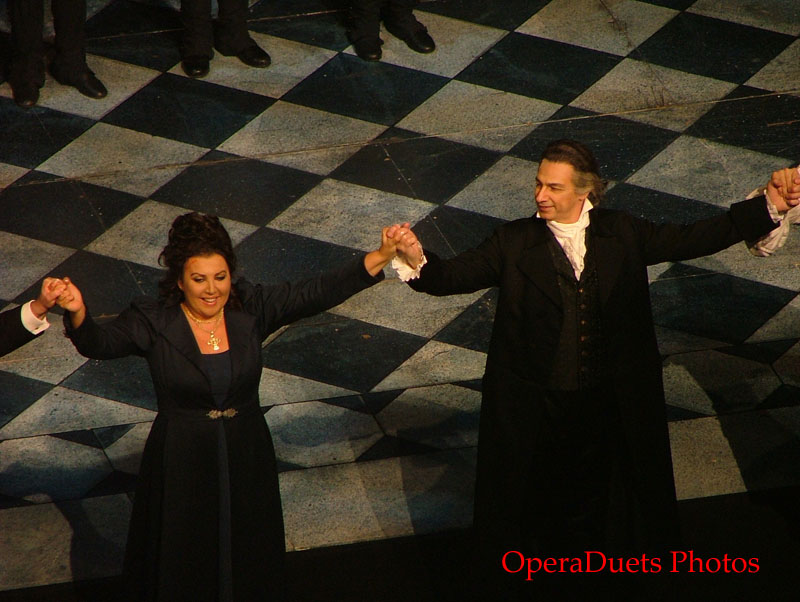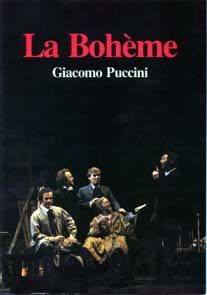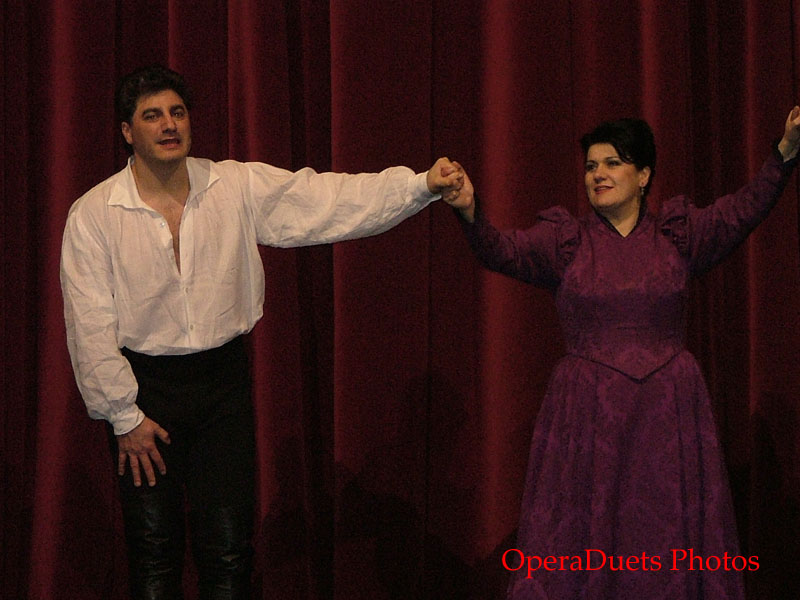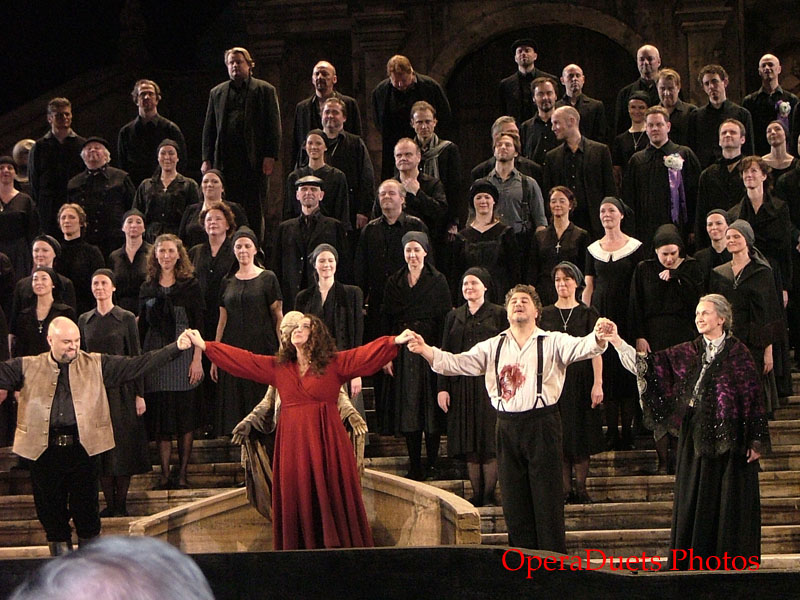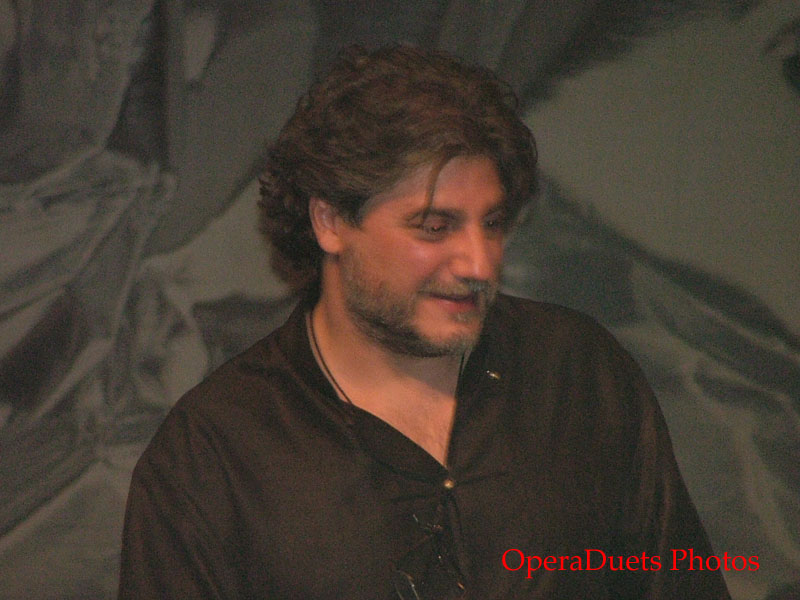2010-12-30 Tosca (G. Puccini), Den Norske Opera & Ballett
Floria Tosca = Maria Guleghina
Mario Cavaradossi = Miroslav Dvorsky
Scarpia = Greer Grimsley
Sakristanen = Ketil Hugaas
Angelotti = Yngve André Søberg
Sciarrone = Andreas Franzén
Spoletta = David Fielder
Fangevokter = Øystein Skre
Gjetergutt = Henrik Enger Holm
Dommer = Steinar Zahl
Roberti = Øivind Solberg4
John Helmer Fiore, conductor
Regie - Paul Curran
Scenography / costumes - Kevin Knight
Light design - David Jacques
Cooperation with Canadian Opera Company
Music Giacomo Puccini
Libretto: Giuseppe Giacosa og Luici Illica
This production premiered by Canadian Opera Company 26. January 2008, Norwegian National Opera 26. August 2010.
Almost New Year's Eve in the Opera. Tosca is one of my favorite operas, and Maria Guleghina is one of my favorite opera singers. I sat in 3rd Balcony almost in the middle. I could see the whole stage all the time.
Paul Curran had the Regie for this Tosca. It was a traditional production with much attention to the details. Puccini's music had already decided much of the timing and the action. Naturally it is hard to get all the details right in every performance. But for the first time I noticed that Puccini had put Angelotti's heavy breathing when he finally was in the church and could relax, when he composed it. It is unfortunately that many directors seem to overlook these clues in the music when they make their "regie". What we now often call Regie-Theater is neither Regie nor Theater, it is a director creating his own play while ignoring most of what would make the opera or theater a living breathing truth appearing before our eyes. So this Tosca production proves that a tradional setting of an opera, where one put it in context and in its own time need not be Old and Boring.
Attention to detail made Tosca real and interesting. From the beginning when Angelotti came in exhausted and till Tosca leapt to her death it was all believable and interesting. And the music was excellent, singers, orchestra was all together to make it opera-magic. Not one person on stage was un-real. But only in the movies could you make sure that everything would happen on the right Puccini note. This was real theater, no editing of false moves was possible. I think it must be absolutely impossible in a theater to close the door at the precise time at the cantata in act 2. Impossible! But it was so close that I would say that the impossible was achieved.
It is seldom one really feel that Cavaradossi and the Sagrestano is really preparing the colors when Cavaradossi sings "Recondita armonia" but of course here one knows it. Miroslav Dvorsky was a Cavaradossi who was really a painter, a revolutionary, a lover of Tosca, a smart man. The interaction of Cavaradossi with Angelotti was also interesting with Angelotti recognizing Cavaradossi and hugs him, but the painter does not recognized him and rejects him to the floor. So real... But then Cavaradossi understands that it is Angelotti who has escaped prison and promise to help him even it can mean his death, which in the end it does.
Mario Cavaradossi still has his head with him even if Angelotti looses his wits and his bags of women's cloths. He picks the bag up but misses the fan. Again something we seldom see so clearly as in this production. Tosca comes. Maria Guleghina is Tosca and one does fall for her spell. Paul Curran had made his choices in how to portray the relation of Cavaradossi and Tosca. I might disagree about making Tosca a little too fickle but when it works and really has foundation in the opera, then it can be true, too. This production is the first production I have seen where Tosca not only comes with flowers but also lays jewels at the Madonna. Attention to details is everywhere in this production. How happy I am to see a Tosca performance where the timing of when Tosca notices la Marchesa Attavanti is the Maddalena that Cavaradossi is painting, is correct.
It was a lovely love duet between Miroslav Dvorsky and Maria Guleghina.
The situation that Angelotti is in, is grave. It is serious business, and when Tosca has left and Angelotti and Cavaradossi meets again, Cavaradossi is taking care of things not like it is only theater but as a life and death situation. They leave. The Sagrestano comes in with a lot of people. And there is a Baccano in chiesa. As a lively scene play out with children, priests, nuns, men and women, the stage is prepared for the Te Deum with women taking the paper bits that Tosca teared up the Cavaradossi drawing of Attavanti, and priests takes away the painter's things. Everything that happens on the stage seem natural and organic... Then Scarpia and his minions appears. It is true as the opera says that this Scapia is feared by Rome's inhabitants. Even the children knows that this is a dangerous man. His minions is also recognized as unfriendly and to be feared. They are all relieved to be allowed to go. But the poor Sagrestano must stay. When Scarpia seem to forget him for a moment, he tries to escape, but the Scarpia's minion's punished the Sagrestano with violence in a corner of the church. Scarpia care not for him. Then Tosca comes in looking for Cavaradossi and the Sagrestano mocks her and is seized by Scarpia's men and pulled away. Scarpia stalks her, pretending to want to offer her Holy Water. Scarpia had planned this since he understood that Cavaradossi, Tosca's lover, was involved in the Angelotti affair. Tosca's jealousy was roused by Attavanti's fan that Scarpia supposedly found with the painter's things. When Tosca leaves Scarpia arrange for 3 spies and one vehicle to follow Tosca. The Te Deum is in progress, an impressive affair. This Scarpia leaves then by almost crashing the whole procession.
Act 2. The best Vissi d'arte ever.
Act 3. A wonderful E lucevan le stelle and a perfect Love Duet by Miroslav Dvorsky and Maria Guleghina.
What can I say? It was perfect.
OD Travel + Photos
Original blog post
For more reviews from my travels, see www.operaduetstravel.com If you want to see more photos from my OperaDuets Travels, go to www.operaduetsphotos.com
